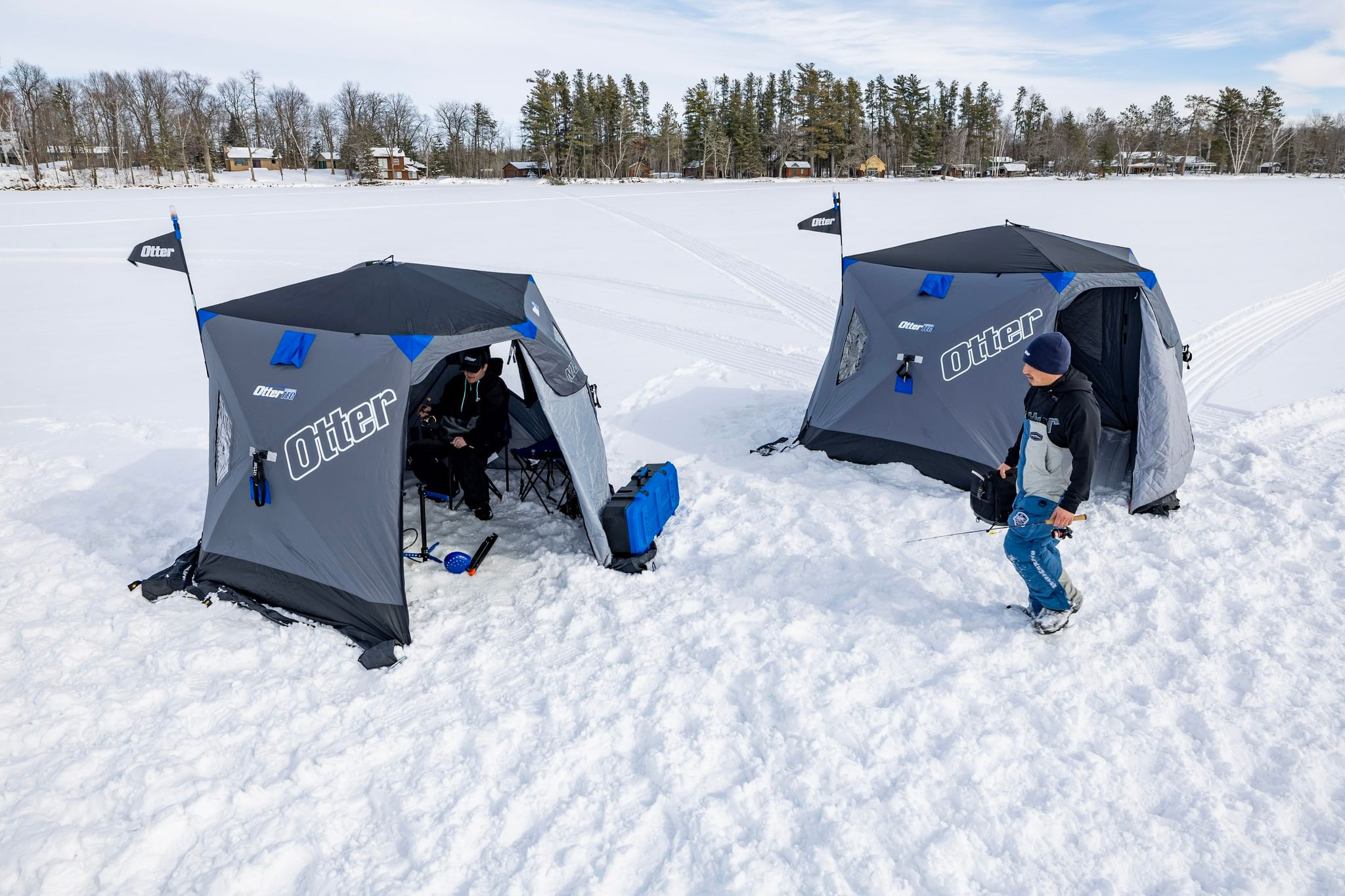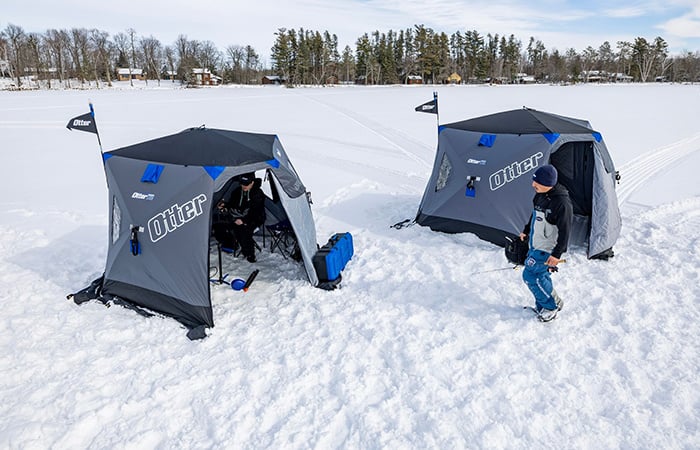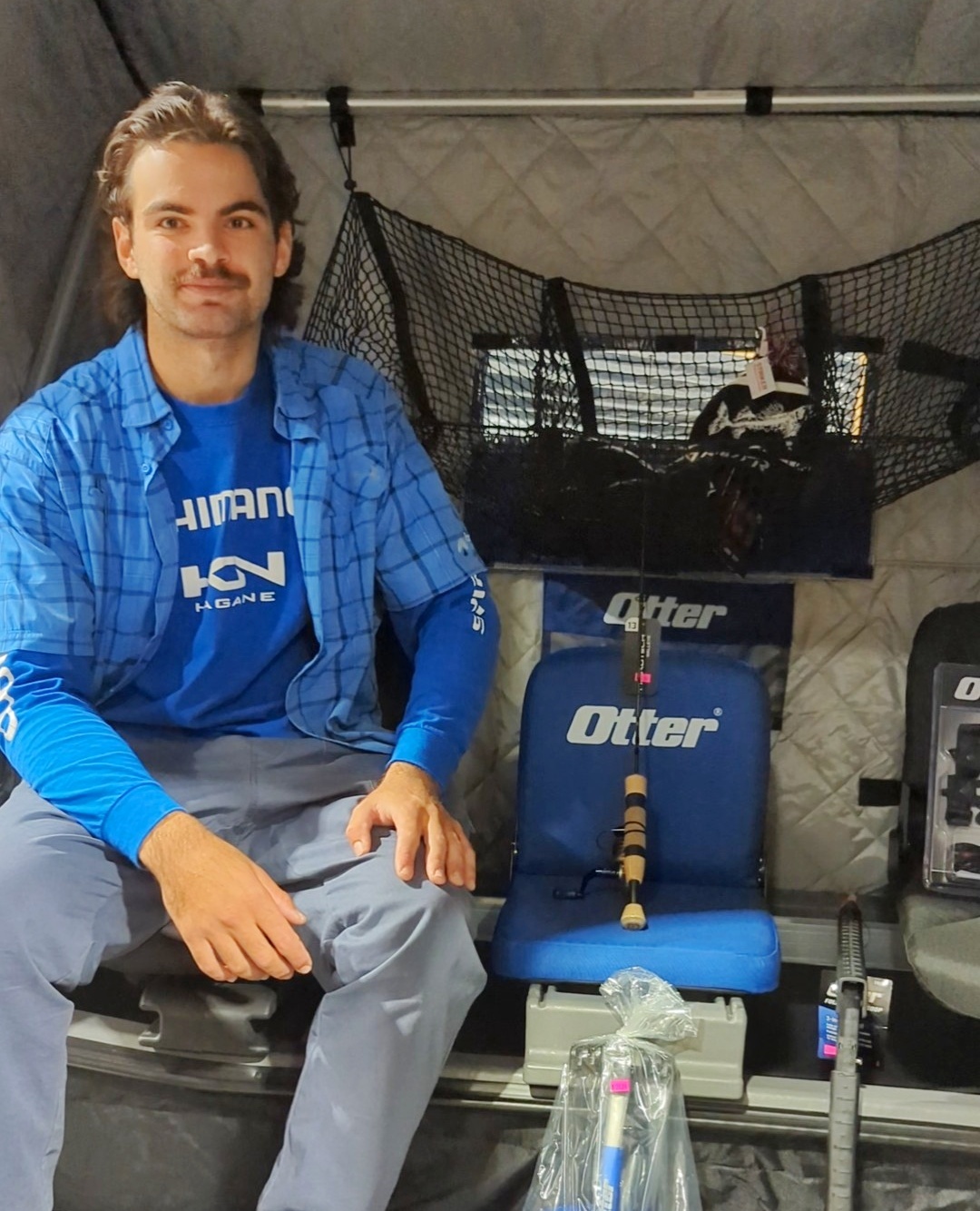Ice Fishing Essentials: A Guide to Safety, Gear and Resources
We are headed into one of the best seasons of the year – Hard Water season!
Being prepared, and following key safety tips will only make your ice-fishing experience that much more enjoyable.
The #1 Safety Tip: Know the thickness of the ice before you go.
Anything less than 4” (10cm) is too thin to fish on. If you are fishing with a group of friends, the ice should be 6” (15cm) thick or more. If you are riding out on a snowmobile, the ice should be 10” (25cm). If you are driving out in a car or pickup truck, the ice should be 12”(30cm) or more.
Check the thickness before you go and check it often on your way.
No ice is without risk, so make sure you know what to do if you break through.
Learn more: https://www.lifesavingsociety.com/water-safety/cold-water-and-ice.aspx
Dress for the weather.
Make sure you dress in layers to be prepared for changing weather conditions which can vary greatly from morning to night. Layers will trap warm air pockets keeping you warmer and act as a barrier from cold, wild chill and frostbit. You can always remove layers if the day warms up.
Avoid cotton materials in all your clothing layers since cotton can get wet and freeze. Cotton does not wick moisture away from your body like a merino wool layer would.
Base Layer: Choose a moisture-wicking base layer that sits against the skin. Merino wool is ideal.
Mid-Layer: This is your insulation layer but choose wisely as you don’t want to add a lot of bulk. A lightweight synthetic piece or fleece would be a good option.
Outerwear: This is the layer that protects you from the elements, such as wind and water. Bibs and jackets by brands like Striker combine flotation and insulation so that you can fish smarter, longer, and safer. (Ice Fishing Suits - https://www.ramakkos.com/fishing/ice-fishing/ice-fishing-suits/ )

Bring your own shelter.
Portable Ice huts not only allow you to go where the fish are, but they also keep you warm and comfortable. Portable Ice-huts from Otter and Eskimo are ventilated, insulated, and made from durable waterproof materials. The more comfortable you are, the longer you will be able to fish.
https://www.ramakkos.com/fishing/ice-fishing/ice-huts-sleds-accessories/

Be in the know.
As of January 1st, 2024, changes have been made to the Ontario Fishing Regulations that include zone-wide seasons and limits. https://www.ontario.ca/page/fishing-notices-and-updates
Download the 2025 Ontario Fishing Regulations Summary (24MB PDF): https://www.ontario.ca/files/2024-12/mnr-2025-fishing-regulations-summary-en-2024-12-09.pdf
Do your research of the area that you are headed and be aware of currents that may mean inconsistent ice. It goes without saying to avoid open water.
Bring a friend.
Ice-fishing is just better with friends! If you are going out solo, let your friends and family know the details of your ice-fishing plans.
Be prepared for the unexpected.
Like any outdoor adventure, make sure that you have the essentials, such as a headlamp, first aid kit, and knife. Add gear for a potential water rescue situation, such as ropes and ice picks AND know how to use them.
Products to enhance your ice-fishing experience.
Carter takes you through some extra tools and must-have items that will make your experience that much better! Watch 2-minute video: https://www.instagram.com/p/C0uUWPCpRkO/
Having the right gear can make all the difference to an enjoyable day out on the ice.
Visit our website for all your ice-fishing needs: https://www.ramakkos.com/fishing/ice-fishing/
ICE FISHING FOR BEGINNERS - FAQS:
How big do I make the ice hole?
Panfish brook trout = 6 inch ice hole
Pike, splake or lake trout = 8 inch ice hole
Drill the hole big enough to allow you to get big fish out of the water, but not too big that it becomes a hazard. Scoop the slush from the hole regularly to keep it from freezing over.
What tackle should I be using? Is it the same as open water fishing?
As a beginner, the best place to start is to use a small jig or jigging spoon with minnows as bait. As you get more experience you can start experimenting with lures that play to sight, movement, sound and smell.
Do I need to buy expensive electronic equipment?
When just starting out, we suggest buying a map of the lake that you are going to learn on. When you get to the lake look for the largest concentration of ice huts and on the map determine what depth they are fishing at and other features such as contour lines that indicate shallow water with weeds. Then look for similar areas on the map that would likely have good biting.
Without the use of a flasher or sonar equipment, you can also use a weight to help determine whether the bottom is hard sand, soft muck, or sticky bottom. You are looking for a sticky bottom that holds food which equals more fish.
Invest in equipment once you have decided that ice-fishing is for you, and you want to spend quality time on the hard water.
Visit us in-store. We would love to answer all your questions.







